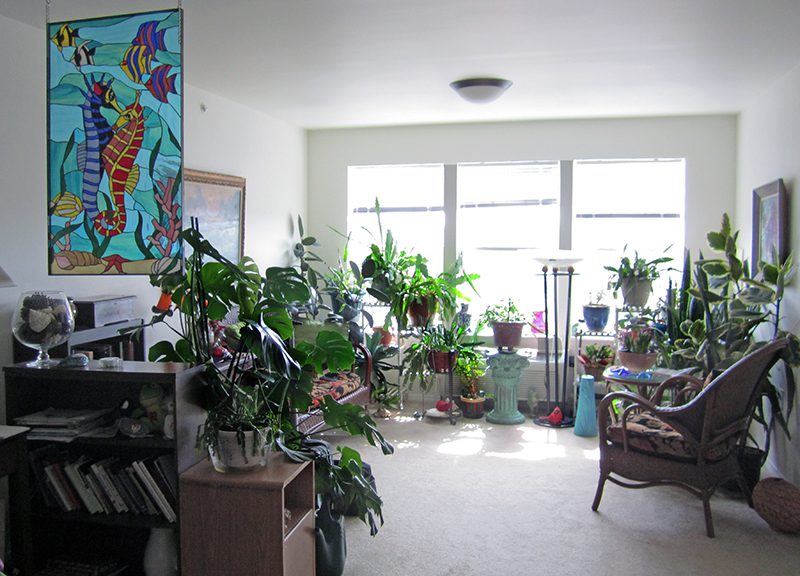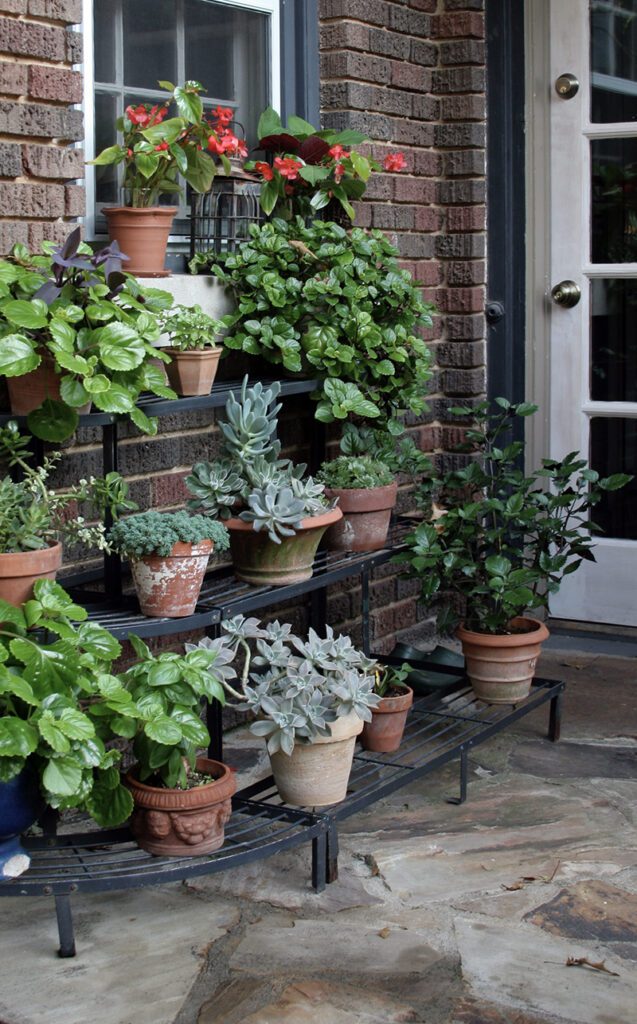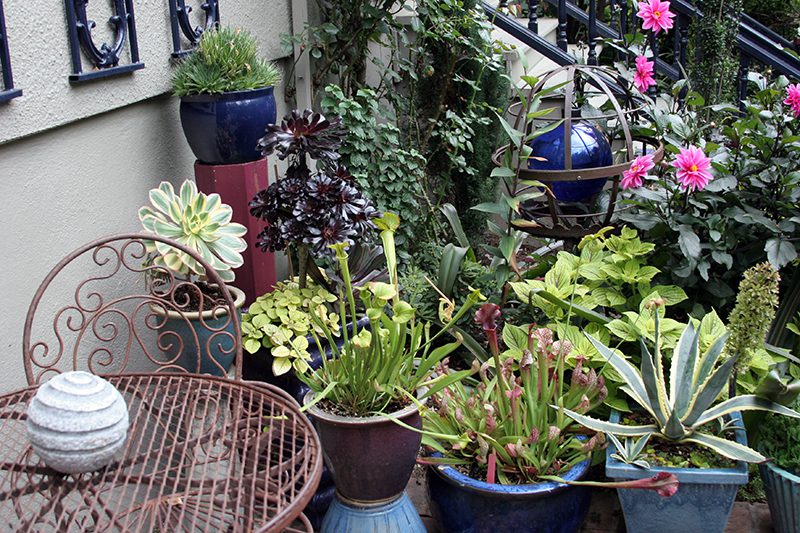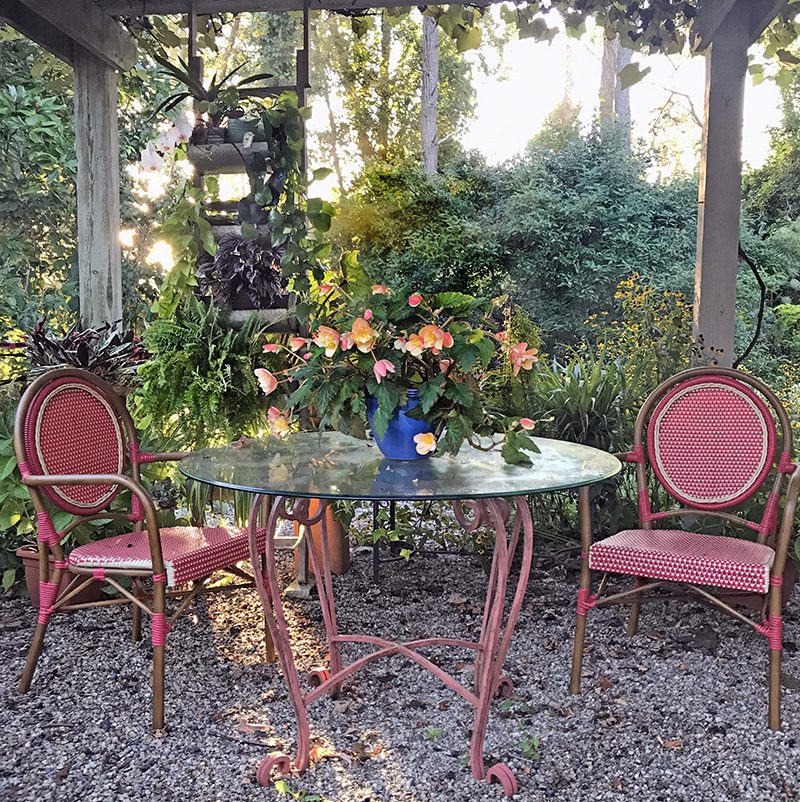Should Houseplants Go Outside for the Summer?
Should Houseplants Go Outside for the Summer?
When my mother was alive, her living room was so filled with plants that it looked like a greenhouse. One visitor said, “All that you’re missing in here is a flock of birds!” Once she moved into an apartment in assisted living, she took many of her plants with her; when her door was open other residents mistook the space for a community conservatory. But no matter where she lived, she always put her plants outside for the summer.

Should everyone put their plants outdoors for the summer?
Not everyone needs to put their plants outdoors…whether you do so depends on the plants you have, the outdoor spaces available, and your ability to move the pots in and out. Here are some tips for making the decision about moving plants outside.
Do you have places that get dappled sunlight or just a bit of morning sun? Many houseplants are tropicals that originally grew under the canopy in the rainforests. Since they grow large and lush without much direct sun, they are perfect for our houses where there is less direct sunlight. But if your only space out-of-doors is in full, hot sun, those plants will be burned to a crisp. So only consider putting your houseplants outside if there is a suitable shady location. Plants such as citrus and cacti that appreciate full sun should be moved first into morning sun or dappled light, and after two or three weeks of adjustment they can be placed in a sunnier location. Never move a plant directly from inside to full sun.
Plants that are prone to insect problems do better outdoors. One reason to move some plants outside is that they are less likely to be infected with scale or other insects. A plant that already has some scale or mealybug on it is also easier to spray well outside. You can spray a plant throughly with insecticidal soap or horticultural oil once you’ve moved it out. The more humid air and good circulation assists a plant’s health as well.

Do you have water easily accessible outdoors where your plants will go? One of the benefits of putting plants out is that it’s easy to water them well with a watering wand. But you’ll need a faucet that’s close to where you have the plants arranged.
Are there plants that shouldn’t go outdoors in the summer? One of the few varieties that should stay indoors are the African violets. These fuzzy-leaf plants don’t do well when their foliage gets wet, so rain, morning dew, or watering them over the top with a wand can cause harm. Keep African violets, and any other plant with furry leaves, indoors.

Will my plants pick up bugs outside? Sometimes people worry that in putting plants outside they will bring insects into their home once the plants come back in. This is seldom the case, and there are things you can do to prevent any possible problems. First, plan on spraying your plants with insecticidal soap or horticultural oil before you bring them inside in September. When your plants are outside, water them very well when they are getting dry but don’t keep them constantly wet: damp soils breed fungus gnats. Once you bring plants back indoors, place some yellow sticky traps – aka whitefly traps – nearby to attract and trap any insect.

Should I fertilize plants when I put them outdoors? Plants that go outdoors tend to put on some lovely growth during the summer. Support that by repotting any plant that’s been in the same pot for more than four or five years, or by fertilizing and top-dressing the plants with earthworm castings. If you’re using a liquid, synthetic fertilizer, water the plant well and let it hydrate for a couple of hours before you apply the fertilizer. Never fertilize a thirsty plant. If you’re using time-release fertilizer, or an organic product, you can sprinkle it directly on the soil and top with a few tablespoons of earthworm castings or compost.
Do I have to move my plants outside? The pots are too heavy for me to lift! I remember that every May mom would call one of my brothers on the phone to make a date for them to move her plants outdoors. The reverse went on in the fall, of course. But if you don’t have someone who can assist with moving plants in and out, don’t worry about it. Keep your plants healthy indoors, rotate their pots regularly so that they don’t become one-sided by leaning toward the sun, and enjoy them in your home all year.
1 Comment
Leave a Comment
Subscribe To Our Newsletter
Sign up for our weekly email about sales and events.

Just like the author’s Mom, I too, do the Spring outside, back inside for Autumn plant rotation. This article answered several of my questions, but I’d add paying attention to weather also (everything from strong, gusty rainstorms to frost warnings) Being able to bring my plants inside during questionable weather, but back out again the next day has allowed me to have my plants outside until mid-late October and I live in the non- tropical paradise that is Chicago.